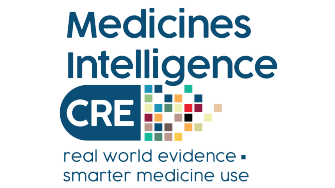
Ms Ximena Camacho
School of Population Health, UNSW Sydney
Learn more opens in a new windowProject Incubator Program

Tapentadol is a µ-opioid agonist, moderate noradrenaline reuptake inhibitor and very weak serotonin reuptake inhibitor. It is less potent than most strong opioids (e.g., oxycodone) but toxicity is yet to be fully understood, particularly among vulnerable populations such as older individuals or those with comorbid conditions. The sustained-release formulation, indicated for relief of chronic moderate to severe pain, was approved by the Therapeutic Goods Administration (TGA) in 2011 and listed on the PBS on 1 June 2014.
Sales of tapentadol have increased since it was first introduced to the market in February 2013; by December 2017, tapentadol accounted for the sixth-largest market share of all opioids sold in Australia, and third-largest percentage of total oral morphine equivalents. To our knowledge, patterns of utilisation of publicly subsidised prescription tapentadol, concordance with prescribing guidelines, and real-world safety have not been assessed in Australia.
This work will comprise a broad set of analyses to explore characteristics of individuals dispensed tapentadol, understand patterns of dispensing, and conduct preliminary exposure-outcomes analyses of potential safety signals.
Jul 2022 - Dec 2023
Prof Sallie Pearson - UNSW Sydney
Dr Andrea Schaffer - UNSW Sydney
Prof Louisa Degenhardt - UNSW Sydney
A/Prof Natasa Gisev - UNSW Sydney
Dr Jon Brett - UNSW Sydney
Prof David Henry - UNSW Sydney
Prof Nick Buckley - University of Sydney
Prof Nicole Pratt - University of South Australia
Dr Erin Kelty - University of Western Australia
Within a population of individuals receiving publicly subsidised prescriptions for tapentadol, our aims are to
1) Characterise the populations of individuals who are dispensed tapentadol prescriptions;
2) Understand prescriber behaviour and quantify concordance with evidence-based guidelines;
3) Undertake feasibility assessments to explore tapentadol exposure and association with potential emerging safety signals
We will leverage two key data sources to address the study aims:
Medicines Intelligence Data Platform (MIDP): a comprehensive population-level linked data collection of all NSW adult residents from 2005-2021, linked to records from Medicare, inpatient separations, emergency department visits, dispensed PBS prescriptions, cancer notifications and deaths.
all women in WA dispensed tapentadol between 2014-2018 (~80,000 women), linked to hospital separations, emergency department visits, mental health services, mortality, births and dispensing of other schedule 8 medicines.
Insights on the safety and utilisation of tapentadol will be of interest to the TGA, Pharmaceutical Benefits Advisory Committee (PBAC), and consumers, and may provide evidence to inform any required regulatory actions or changes to subsidy criteria. Insights on prescriber behaviour may be of interest to clinical and/or pharmacy groups.
This section will be updated throughout the project. Please return in the future to see the impact from this project.